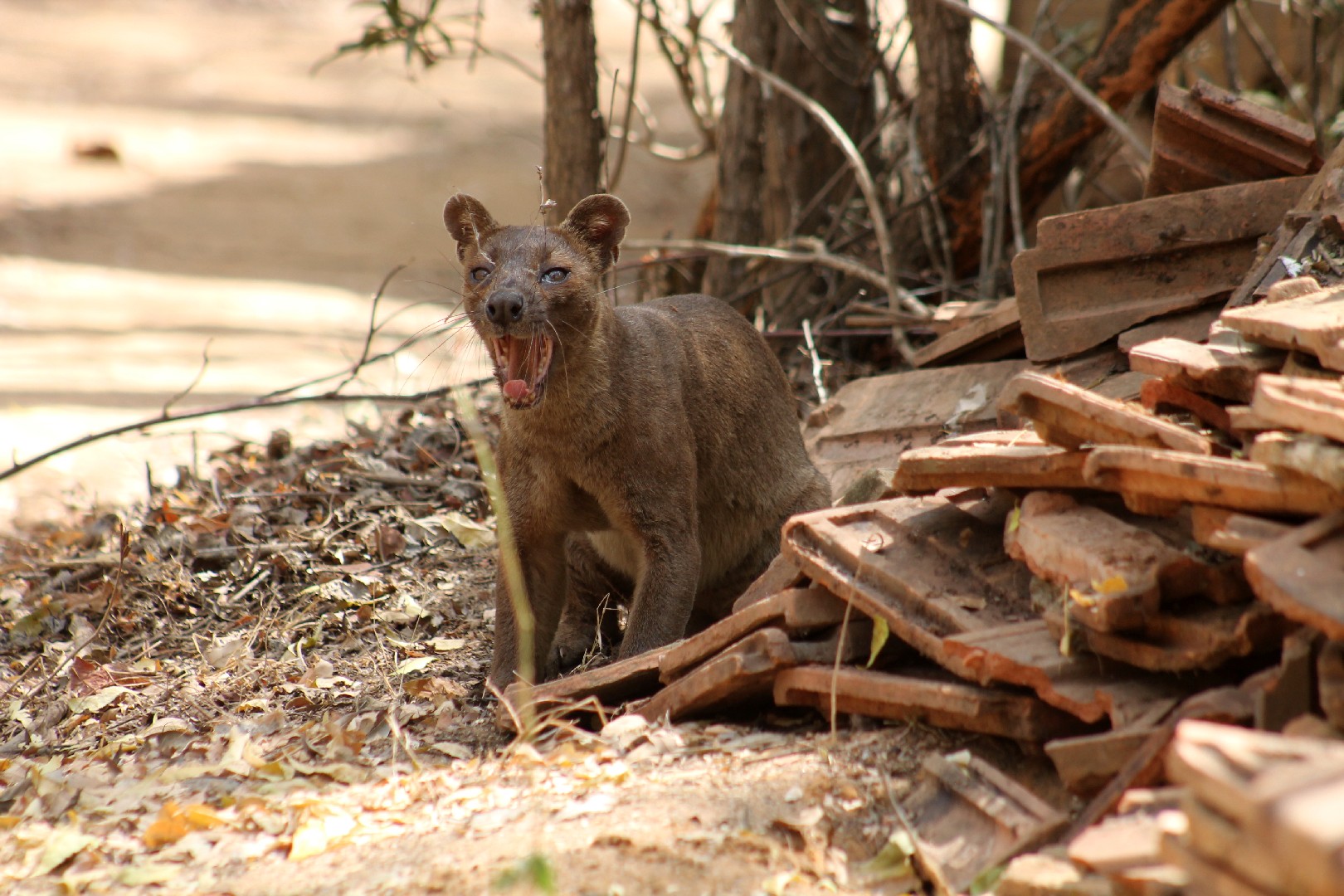Fossa
A species of Fossa, Also known as Fosa Scientific name : Cryptoprocta ferox Genus : Fossa
Fossa, A species of Fossa
Also known as:
Fosa
Scientific name: Cryptoprocta ferox
Genus: Fossa
Content
Description General Info
 Photo By Heinonlein , used under CC-BY-SA-4.0 /Cropped and compressed from original
Photo By Heinonlein , used under CC-BY-SA-4.0 /Cropped and compressed from original Description
The fossa appears as a diminutive form of a large felid, such as a cougar, but with a slender body and muscular limbs, and a tail nearly as long as the rest of the body. It has a mongoose-like head, relatively longer than that of a cat, although with a muzzle that is broad and short, and with large but rounded ears. It has medium brown eyes set relatively wide apart with pupils that contract to slits. Like many carnivorans that hunt at night, its eyes reflect light; the reflected light is orange in hue. Its head-body length is 70–80 cm (28–31 in) and its tail is 65–70 cm (26–28 in) long. There is some sexual dimorphism, with adult males (weighing 6.2–8.6 kg or 14–19 lb) being larger than females (5.5–6.8 kg or 12–15 lb). Smaller individuals are typically found north and east on Madagascar, while larger ones to the south and west. Unusually large individuals weighing up to 20 kg (44 lb) have been reported, but there is some doubt as to the reliability of the measurements. The fossa can smell, hear, and see well. It is a robust animal and illnesses are rare in captive fossas. Both males and females have short, straight fur that is relatively dense and without spots or patterns. Both sexes are generally a reddish-brown dorsally and colored a dirty cream ventrally. When in rut, they may have an orange coloration to their abdomen from a reddish substance secreted by a chest gland, but this has not been consistently observed by all researchers. The tail tends to be lighter in coloration than the sides. Juveniles are either gray or nearly white. Several of the animal's physical features are adaptions to climbing through trees. It uses its tail to assist balance and has semi-retractable claws that it uses to climb trees in its search for prey. It has semiplantigrade feet, switching between a plantigrade-like gait (when arboreal) and a digitigrade-like one (when terrestrial). The soles of its paws are nearly bare and covered with strong pads. The fossa has very flexible ankles that allow it to readily grasp tree trunks so as to climb up or down trees head first or to leap to another tree. Captive juveniles have been known to swing upside down by their hindfeet from knotted ropes. The fossa has several scent glands, although the glands are less developed in females. Like herpestids it has a perianal skin gland inside an anal sac which surrounds the anus like a pocket. The pocket opens to the exterior with a horizontal slit below the tail. Other glands are located near the penis or vagina, with the penile glands emitting a strong odor. Like the herpestids, it has no prescrotal glands. 
General Info
Lifespan
15-20 years
Diet
The fossa's diet primarily consists of small to medium-sized mammals. It specifically favors lemurs, supplementing this diet with rodents, reptiles, amphibians, and occasionally birds. Carnivorous in nature, the fossa is also known to scavenge.
Appearance
The fossa is a medium-sized mammal resembling a large, muscular, short-legged cat. Its dense, coarse fur is reddish-brown, often featuring a few faint, irregular dark stripes on the hind limbs and tail. It has a narrow head with large, prominent ears and eyes, and a long, bushy tail. Male and female fossa look similar, but males are slightly larger and heavier.
Behavior
Fossa, also known as the fossa, is a primarily solitary and nocturnal creature. This carnivore is notably agile, utilizing its retractable claws and flexible ankles for adept climbing. Dominant individuals mark their territory via scent glands. Most importantly, fossa displays a unique reproductive characteristic: females enter a brief period of 'masculinization' during adolescence.
Population
Decreasing